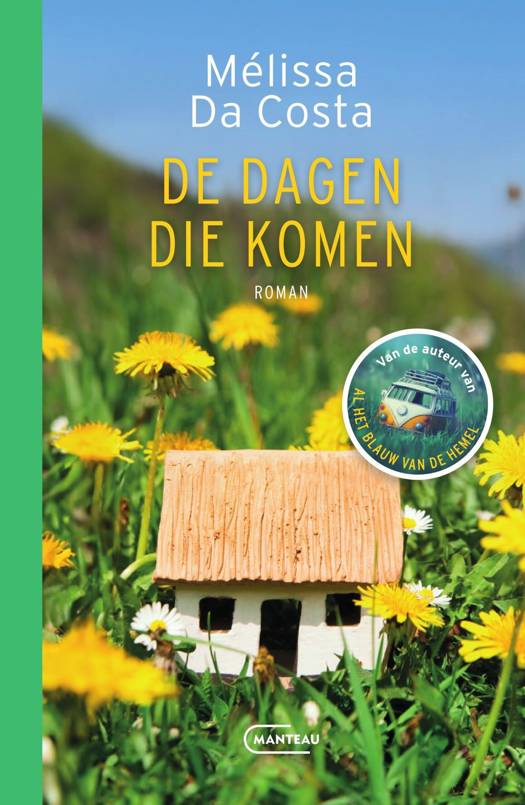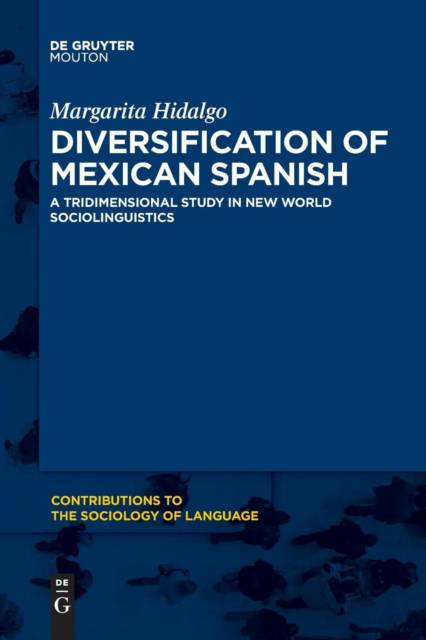
- Afhalen na 1 uur in een winkel met voorraad
- Gratis thuislevering in België vanaf € 30
- Ruim aanbod met 7 miljoen producten
- Afhalen na 1 uur in een winkel met voorraad
- Gratis thuislevering in België vanaf € 30
- Ruim aanbod met 7 miljoen producten
Diversification of Mexican Spanish
A Tridimensional Study in New World Sociolinguistics
Margarita HidalgoOmschrijving
This book offers a diversification model of transplanted languages that facilitates the exploration of external factors and internal changes. The general context is the New World and the variety that unfolded in the Central Highlands and the Gulf of Mexico, herein identified as Mexican Colonial Spanish (MCS). Linguistic corpora provide the evidence of (re)transmission, diffusion, metalinguistic awareness, and select focused variants. The tridimensional approach highlights language data from authentic colonial documents which are connected to socio-historical reliefs at particular periods or junctions, which explain language variation and the dynamic outcome leading to change.
From the Second Letter of Hernán Cortés (Seville 1522) to the decades preceding Mexican Independence (1800-1821) this book examines the variants transplanted from the peninsular tree into Mesoamerican lands: leveling of sibilants of late medieval Spanish, direct object (masc. sing.] pronouns LO and LE, pronouns of address (vos, tu, vuestra merced plus plurals), imperfect subjunctive endings in -SE and -RA), and Amerindian loans. Qualitative and quantitative analyses of variants derived from the peninsular tree show a gradual process of attrition and recovery due to their saliency in the new soil, where they were identified with ways of speaking and behaving like Spanish speakers from the metropolis. The variants analyzed in MCS may appear in other regions of the Spanish-speaking New World, where change may have proceeded at varying or similar rates. Additional variants are classified as optimal residual (e.g. dizque) and popular residual (e.g. vide). Both types are derived from the medieval peninsular tree, but the former are vital across regions and social strata while the latter may be restricted to isolated and / or marginal speech communities.
Each of the ten chapters probes into the pertinent variants of MCS and the stage of development by century. Qualitative and quantitative analyses reveal the trails followed by each select variant from the years of the Second Letter (1520-1522) of Hernán Cortés to the end of the colonial period. The tridimensional historical sociolinguistic model offers explanations that shed light on the multiple causes of change and the outcome that eventually differentiated peninsular Spanish tree from New World Spanish. Focused-attrition variants were selected because in the process of transplantation, speakers assigned them a social meaning that eventually differentiated the European from the Latin American variety.
The core chapters include narratives of both major historical events (e.g. the conquest of Mexico) and tales related to major language change and identity change (e.g. the socio-political and cultural struggles of Spanish speakers born in the New World). The core chapters also describe the strategies used by prevailing Spanish speakers to gain new speakers among the indigenous and Afro-Hispanic populations such as the appropriation of public posts where the need arose to file documents in both Spanish and Nahuatl, forced and free labor in agriculture, construction, and the textile industry.
The examples of optimal and popular residual variants illustrate the trends unfolded during three centuries of colonial life. Many of them have passed the test of time and have survived in the present Mexican territory; others are also vital in the U.S. Southwestern states that once belonged to Mexico. The reader may also identify those that are used beyond the area of Mexican influence. Residual variants of New World Spanish not only corroborate the homogeneity of Spanish in the colonies of the Western Hemisphere but the speech patterns that were unwrapped by the speakers since the beginning of colonial times: popular and cultured Spanish point to diglossia in monolingual and multilingual communities.
After one hundred years of study in linguistics, this book contributes to the advancement of newer conceptualization of diachrony, which is concerned with the development and evolution through history. The additional sociolinguistic dimension offers views of social significant and its thrilling links to social movements that provoked a radical change of identity. The amplitude of the diversification model is convenient to test it in varied contexts where transplantation occurred.
Specificaties
Betrokkenen
- Auteur(s):
- Uitgeverij:
Inhoud
- Aantal bladzijden:
- 437
- Taal:
- Engels
- Reeks:
- Reeksnummer:
- nr. 111
Eigenschappen
- Productcode (EAN):
- 9781501516955
- Verschijningsdatum:
- 11/06/2018
- Uitvoering:
- Paperback
- Formaat:
- Trade paperback (VS)
- Afmetingen:
- 156 mm x 234 mm
- Gewicht:
- 671 g

Alleen bij Standaard Boekhandel
Beoordelingen
We publiceren alleen reviews die voldoen aan de voorwaarden voor reviews. Bekijk onze voorwaarden voor reviews.











